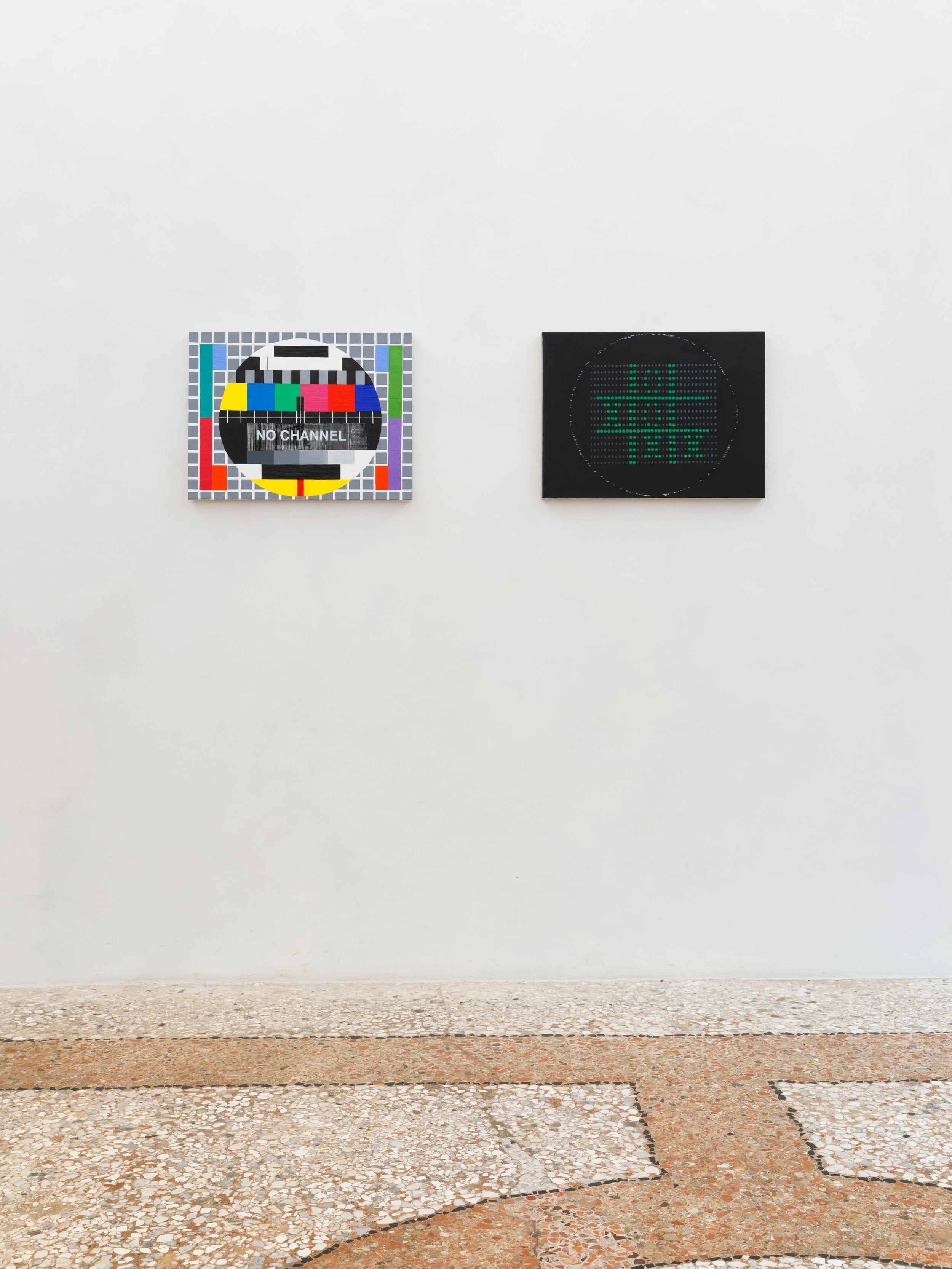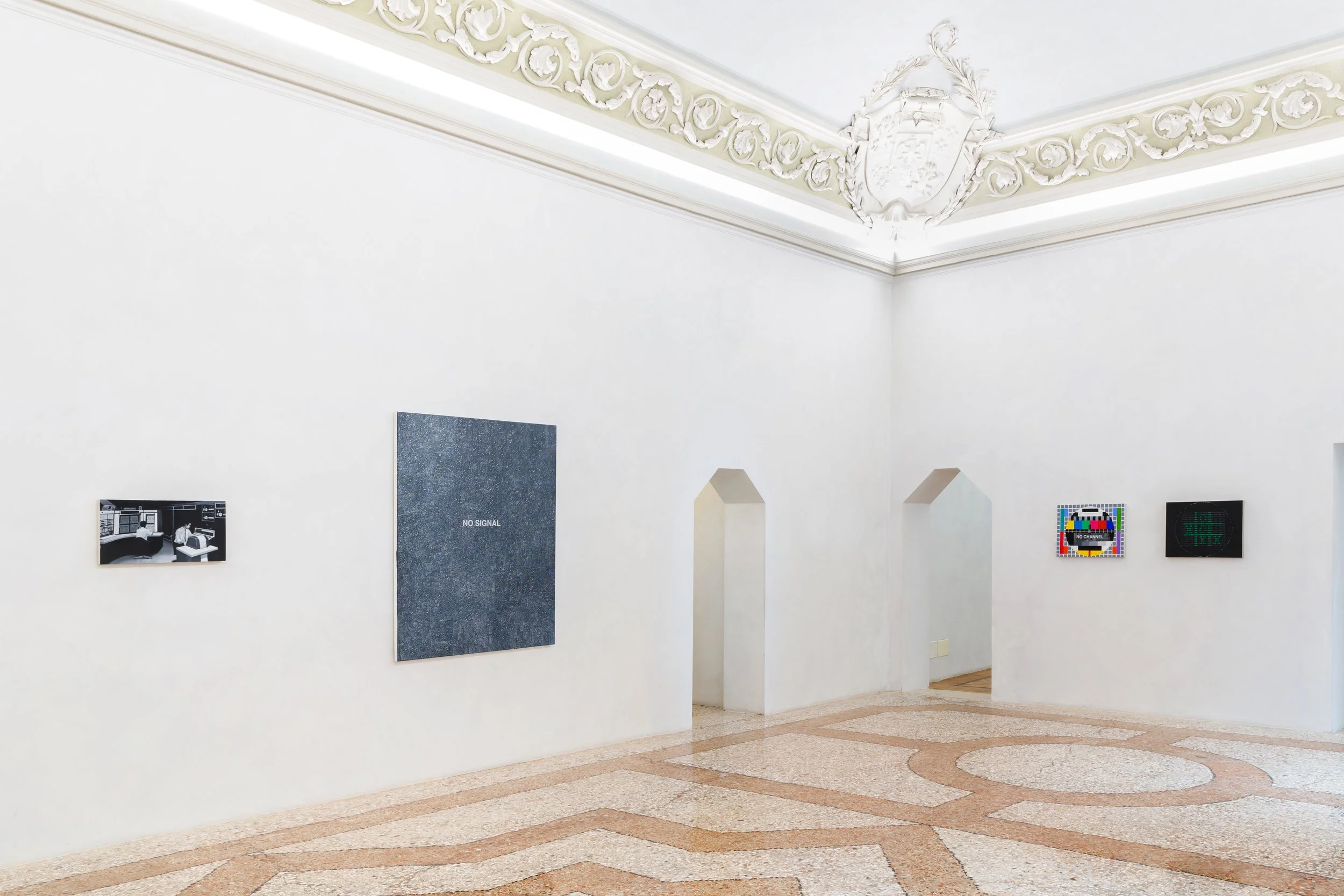OXO, 2021
OXO, 2021
Oil on linen
46 x 61 cm (18 x 24 in)
Tan Mu’s OXO (2021) revisits a pivotal moment in the history of human-computer interaction, drawing inspiration from OXO, one of the earliest video games, developed by Alexander Shafto Douglas in 1952. This game, a digital simulation of tic-tac-toe, was created on the Electronic Delay Storage Automatic Calculator (EDSAC), one of the first stored-program computers. Tan Mu’s painting captures the aesthetic of the early cathode-ray tube (CRT) displays used in OXO, where game states were visualized through a grid of illuminated dots. The minimalist yet highly structured composition of OXO echoes the rudimentary graphics of the original game while highlighting the fundamental principles of computation, logic, and the visual language of early digital interfaces. Through this work, Tan Mu reflects on the evolution of human-machine communication, tracing its origins from one of the first computer games to contemporary digital interfaces. By reinterpreting OXO as a painted image, she bridges historical technological milestones with artistic expression, emphasizing the persistence of interactive logic and its profound impact on the digital landscape.
Signal, May 5 – June 10, 2022, Peres Projects, Milan
Signal, May 5 – June 10, 2022, Peres Projects, Milan
Signal, May 5 – June 10, 2022, Peres Projects, Milan
Q: Can you talk about the inspiration and background of this work?
Tan Mu: This work is inspired by a pivotal moment in early computing history, particularly the development of OXO. OXO was an early game in which players moved a cursor to complete a tic-tac-toe (OXO) pattern, winning by aligning three marks in a row. It served as an early experiment in human-computer interaction, where users controlled the cursor's position and input data via buttons rather than a mouse or keyboard. Players entered commands using a rotary dial, and the computer responded with logical outputs. This input-feedback mechanism laid the foundation for modern interactive systems. The green dots in the image symbolize the cursor’s position, marking the input data. Although this early interface was simple, it signified the beginning of human-computer interaction.
Q: Why are you interested in the development of early games? Does it relate to your exploration of technology?
Tan Mu: Technological advancements have not only changed how games are presented but have also continuously extended human sensory experiences. From the paper-and-pencil tic-tac-toe to OXO, and now to modern virtual reality (VR) gaming, the evolution of games reflects how technology enhances interactions between humans and the digital world. Although OXO was limited to pixelated images on a CRT screen, it was a crucial step toward visual interfaces in computer gaming and established the fundamentals of human-computer interaction. In the span of about 70 years, gaming technology has undergone a dramatic transformation—from rudimentary graphics to highly immersive, multi-dimensional experiences. Today’s games not only offer hyper-realistic visuals but also engage multiple senses through VR and other technologies, blurring the boundaries between virtual and physical realities. This contrast is striking and makes me reflect on the trajectory of technological progress. The evolution of gaming is not just about computational power—it is about expanding sensory experiences and redefining how we engage with digital environments.
Q: In your Signal series, OXO is juxtaposed with No Channel. Could you elaborate on the significance of this arrangement?
Tan Mu: In the exhibition, I placed OXO alongside No Channel because they share similarities in both scale and composition. Both works use square canvases with circular central elements, evoking the aesthetics of screens and functional design. While their subjects differ, they both explore the visual and functional aspects of early computing technologies. This juxtaposition not only enhances the exhibition’s visual coherence but also allows for a deeper investigation into the continuity and transformation of technological development.
Q: How do you perceive the relationship between functional design and aesthetics?
Tan Mu: The balance between functional design and aesthetics is a central theme in my work. Whether in early computing interfaces like OXO or contemporary digital environments, design must reconcile usability with visual appeal. Early designs, though minimalistic, evolved through experimentation and iteration, ultimately shaping the familiar digital interfaces we use today. I really appreciate this kind of functional aesthetic. I have discovered that some of my paintings or the objects I depict contain distinct symbols, numbers, or iconic characters. These elements evoke a sense of familiarity, representing our collective memory of this era. Through these works, I seek to examine how functional design influences visual perception and to reflect on the spirit of experimentation and innovation that drives technological progress.




